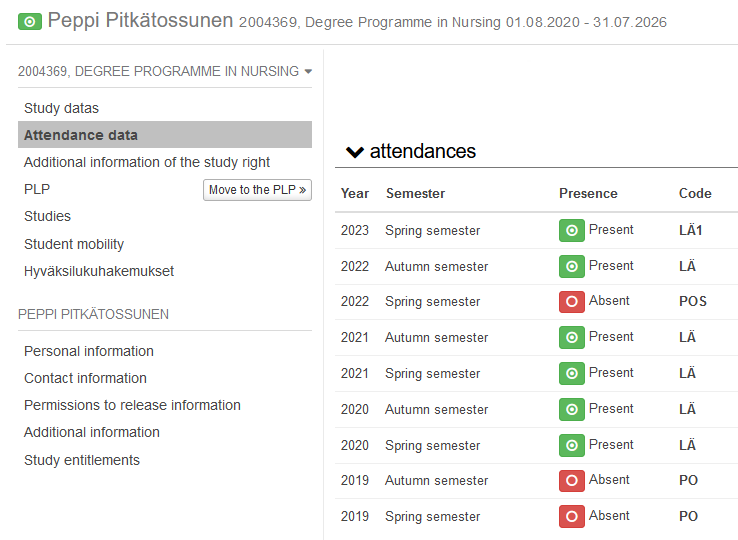eRPL – Accreditation
Accreditation principles and terminology
- Accreditation (or recognition of prior learning RPL) is macro concept.
- Replacement means the replacement of studies included in the curriculum with higher education studies of at least the same level (EQF/NQF 6 or EQF/NQF7) and with similar learning objectives completed elsewhere in the same field of study.
- Inclusion means the inclusion of higher education studies of at least the same level (EQF/NQF 6 or EQF/NQF7) completed elsewhere as part of the degree.
- Recognition of competence acquired in other ways means that you try to understand and structure the competence you have acquired in relation to the learning objectives of the module or course.
- eRPL is an accreditation tool in Peppi.
Basic information on accreditation
The student can apply for several types of accreditations in Peppi:
- Replacement that can be done in the following ways:
- One to one: A single, earlier completed course, study module or competence replaces a single course or study module
- One to many: Previous completed studies or competence replaces for several courses
- Many to one: Previous completed studies or several competences replace one course
- Many to many: Previous completed studies or competences replace several courses or study modules
- Partial: Previous completed studies or competence replaces for a part of a course.
- Inclusion: Previous completed studies or competence are included in the degree, but they do not replace for any parts of the degree.
- Exemption: The student does not have to complete the course. For example, a student can apply for an exemption from language studies when the prerequisites are met.
It is important that you also familiarise yourself with the process and principles of accreditation at the For students web pages and in TOKA.
The teacher is responsible for making sure that the credits are entered correctly on the student's PLP and the transcript of records.
Note. Students can apply for accreditation with the competence they have acquired in the course only once. For example, if they have completed 5 ECTS course and received accreditation for Jamk’s 5 ECTS course, they cannot apply for accreditation elsewhere with the same course. If instead of a 5 ECTS, a course is only partially accepted, e.g. 2 ECTS, they can apply for accreditation with the remaining part, i.e. 3 ECTS elsewhere.
If students act contrary to the instructions, they are guilty of dishonesty and applications can be rejected afterwards.
Student’s attendance data
In order to process the application, the student must be attending or the student must have sent the application during his/her attendance period. The study attainment must always be recorded to the period which the student is attending. Therefore, if the student has sent his or her application during attendance period, but you do not process it until he or she is absent, you must record the study attainment of accreditation for the last day of the previous attendance period.
If the student has finished or completed his or her studies, you can reject the application with the Reject application button on the front page of the application.
You can check the student’s attendance data by opening the student name link in the main window of the application. If there is the green symbol in the front of student’s name (see figure 1), the student is attending. Read more about the attendance data in the Peppi instructions.

The School of Professional Teacher Education and the Language Centre have their own guidelines for accreditation. Get to know about them!